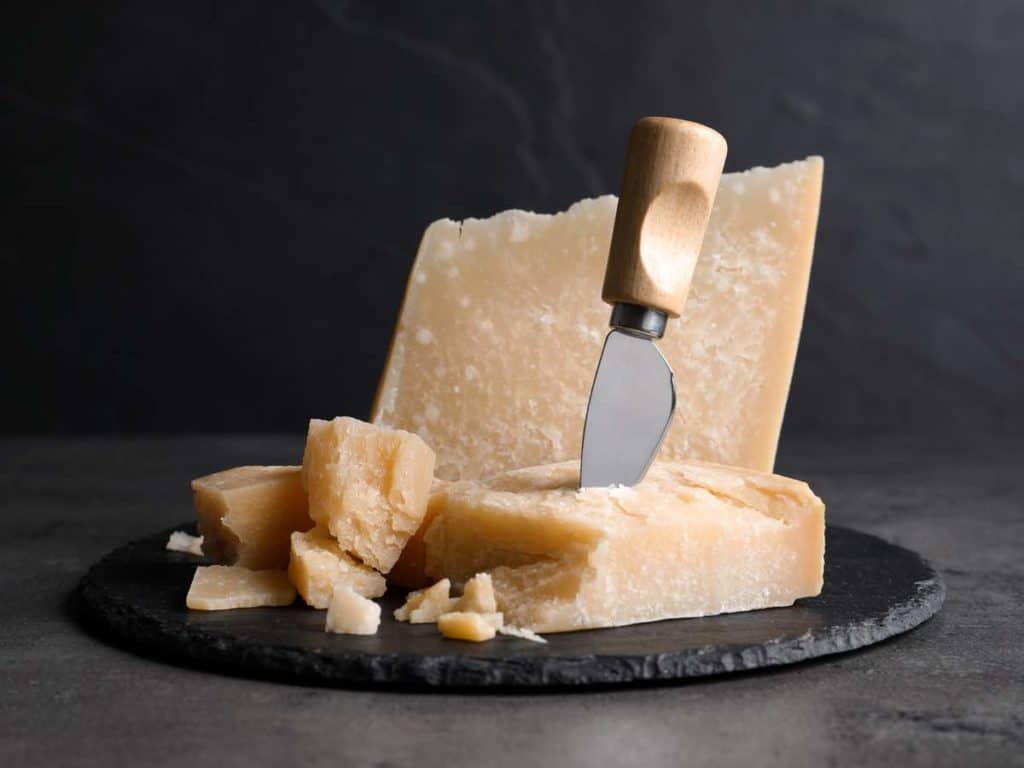Nothing ruins a good pasta dish like stale, flavorless, or moldy cheese. Parmesan is a hard cheese with a sharp, nutty taste that can elevate any meal.
But it also needs some TLC to keep it fresh and tasty. The secret to storing Parmesan cheese is to balance moisture, air, and temperature. Too much or too little of any of these can spoil your cheese.
In this article, I’ll share some tips on how to store it right.
Key Takeaways
- A pack of opened Parmesan will last in the fridge for up to two months.
- Always use a plastic wrap, aluminum, or an airtight container.
1. Keep Parmesan in the Refrigerator
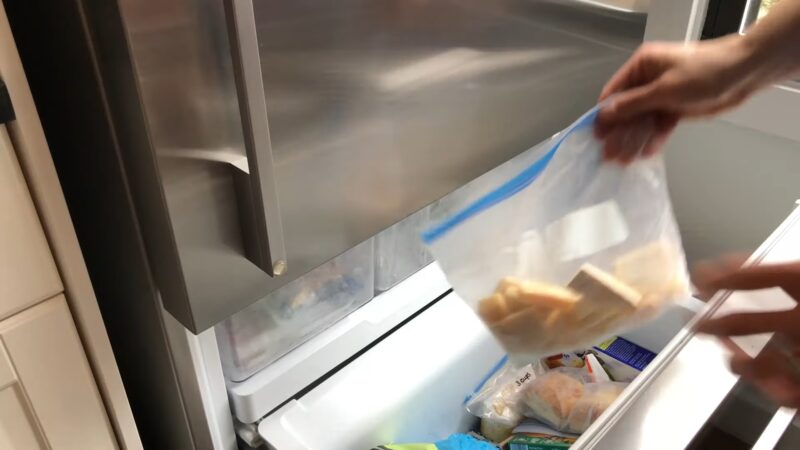
Proper refrigeration is key to extending the life of Parmesan cheese, ensuring it remains fresh and flavorful for as long as possible. The refrigerator provides a controlled environment that slows bacterial growth and prevents the cheese from spoiling prematurely.
What is the Right Temperature?
Maintaining the correct temperature in the refrigerator is crucial for storing Parmesan cheese.
The ideal temperature range is between 34°F and 40°F. This range helps slow down the aging process of the cheese without freezing it, which can alter its texture and flavor.
Consistent temperature is vital; fluctuations can lead to moisture buildup, which may encourage mold growth.
Choose the Right Spot For It
The location within the refrigerator can significantly affect the quality. Avoid storing cheese in the refrigerator door, where temperature fluctuations are more common due to frequent opening and closing.
Instead, place it in the main compartment, ideally in a middle shelf where the temperature is most stable. This area ensures the cheese is kept away from direct cold air blasts from the cooling elements, which can cause uneven aging and drying.
2. Store in Airtight Containers or Tightly Wrapped in Plastic Wrap

This method effectively limits the cheese’s exposure to air, which can lead to oxidation and moisture loss. Oxidation can affect the flavor and aroma of the cheese, while moisture loss can harden it prematurely, making it less enjoyable to eat. You can use the same solution to store other types of cheese, such as feta.
Tips for Proper Wrapping
When using plastic wrap, ensure the cheese is wrapped tightly, leaving no part exposed to air. This can be achieved by pressing the wrap directly onto the surface of the cheese, then wrapping it around the entire piece.
For added protection, consider wrapping the cheese in parchment paper before applying the plastic wrap. This extra layer helps regulate moisture around the cheese, preventing it from drying out or becoming too moist.
3. For Blocks, Wrap in Parchment Paper Before Plastic Wrap
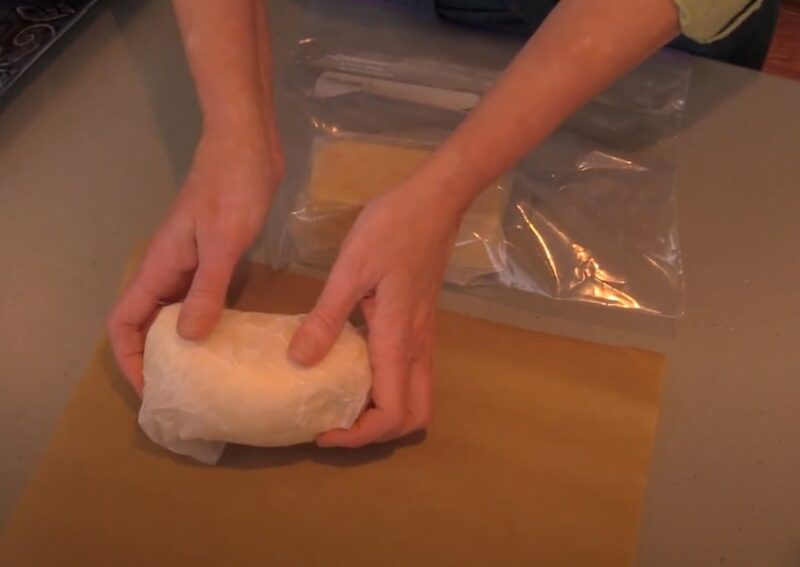
Wrapping the blocks in parchment paper before encasing them in plastic wrap is a technique that enhances flavor preservation.
Parchment paper acts as a breathable layer, allowing the cheese to maintain its natural humidity level without trapping excess moisture. This balance is crucial for preserving the cheese’s texture and preventing mold growth.
Wrapping Guide
Start by cutting a piece of parchment paper large enough to wrap around the cheese block completely. Place the cheese in the center of the paper, then fold the paper around it, much like wrapping a gift.
Once the cheese is fully encased in parchment, proceed to wrap it tightly in plastic wrap. This double-layer method ensures the cheese is protected from air exposure while still allowing it to “breathe,” preventing any condensation that could lead to spoilage.
4. Use a Vacuum Sealer for Longer Storage
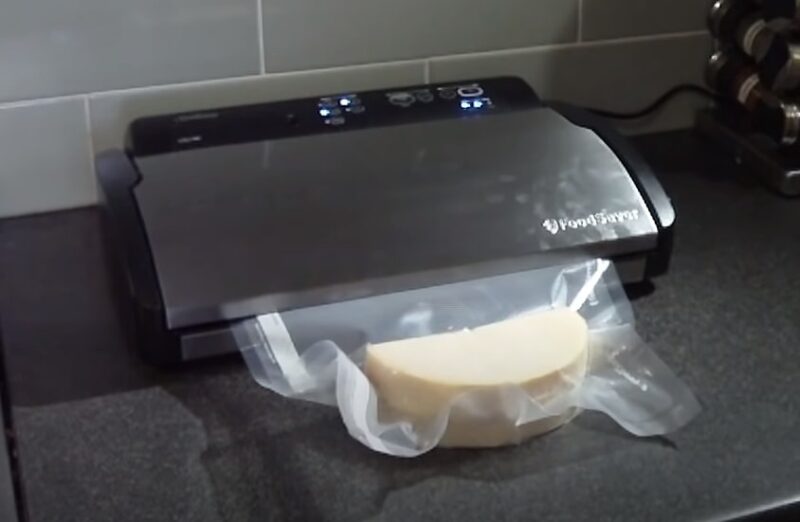
Vacuum sealing is a highly effective method for extending the shelf life of Parmesan cheese. By removing air from the packaging, vacuum sealing prevents oxidation and moisture loss, two primary causes of spoilage and flavor degradation in cheese.
This method is particularly useful for those who buy Parmesan in bulk and wish to store it over extended periods.
How to Vacuum Seal Parmesan?
Start by cutting it into manageable portions that you will likely use at one time. This approach helps avoid repeatedly opening and resealing the same package, which can introduce moisture and air, compromising the cheese’s quality.
Place the cheese portions in vacuum seal bags, ensuring there’s a bit of space around each piece to allow for complete air removal.
5. Grate Only What You Need, Store the Rest in Block Form

Grating only the amount of Parmesan you need for immediate use is a practice that preserves the cheese’s flavor and texture. Parmesan cheese loses its moisture and aroma more quickly once grated.
Keeping it in block form until use minimizes surface area exposure to air, reducing the rate of flavor loss and moisture evaporation.
Best Practices
When you need grated Parmesan, use a clean, dry grater to avoid introducing moisture to the cheese. After grating the necessary amount, immediately return the remaining block to its proper storage conditions, following the guidelines previously mentioned for wrapping and refrigeration.
This method ensures that the cheese retains its integrity for future use. For convenience, consider grating a small amount ahead of time, storing it in an airtight container in the refrigerator for short-term use.
6. Keep Away from Strong-Smelling Foods to Avoid Flavor Absorption
Storing Parmesan cheese away from strong-smelling foods in the refrigerator is crucial to prevent it from absorbing unwanted odors. Cheese, due to its porous nature, can easily take on the flavors of nearby foods, which may alter its original taste and aroma.
Strategies for Odor Prevention
To safeguard Parmesan from absorbing odors, consider storing it in a dedicated cheese compartment or a separate container within the refrigerator. If such options are not available, ensure that strongly scented items like onions, garlic, or fish are well-sealed.
Additionally, regular cleaning of the refrigerator helps maintain an odor-free environment, further protecting the cheese’s integrity.
7. Label with the Storage Date
Labeling the storage date is a simple yet effective way to track its freshness and ensure quality over time. Knowing when the cheese was first stored can help determine its shelf life and optimal consumption period.
Use a piece of masking tape or a food-safe sticker to mark the storage date on the cheese’s packaging. If using a container, place the label where it’s easily visible.
Apart from that, it is crucial to be aware the shelf life of different forms of Parmesan, such as grated, opened, or sliced.
8. Freeze in Airtight Containers for Extended Use
Freezing grated Parmesan in airtight containers can significantly extend its usability beyond the refrigerator’s limitations. Freezing slows down the enzymatic processes and bacterial growth that cause the cheese to spoil, making it a practical option for long-term storage.
Effective Freezing Techniques
For optimal results, distribute grated Parmesan in small, manageable portions within airtight containers or freezer bags. Removing as much air as possible before sealing prevents freezer burn and maintains the cheese’s quality.
Label each container with the date of freezing to keep track of how long it has been stored. When ready to use, thaw the needed amount in the refrigerator overnight, ensuring it retains its flavor and texture.
9. Check Regularly for Mold and Remove Any Affected Parts Immediately
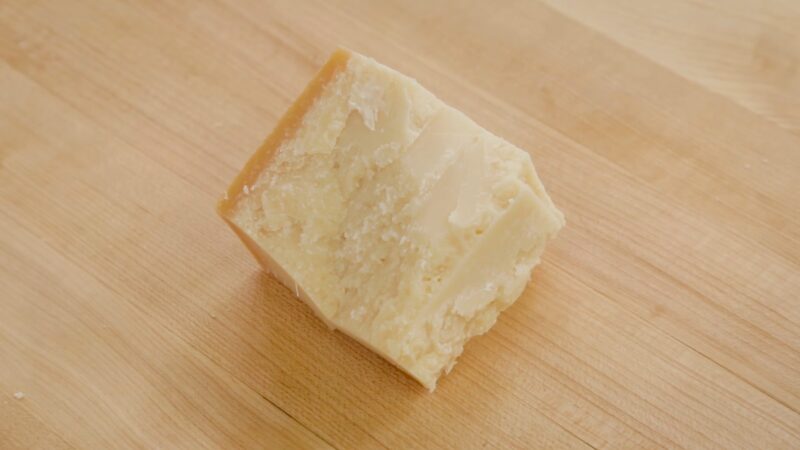
Regular inspection for mold is essential to maintain its safety and quality. Mold can develop even under ideal storage conditions, especially on cheese exposed to air or moisture.
Can You Remove the Mold Without Throwing the Whole Block Away?
Cut at least 1 inch around and below the mold spot, ensuring the knife does not touch the mold to avoid contaminating other parts of the cheese. After removing the moldy section, rewrap the cheese in fresh packaging to protect it from further exposure.
FAQs
How long can Parmesan last without refrigeration?
Parmesan cheese is a hard cheese that has a long shelf life. It can last for several weeks at room temperature, as long as it is kept away from heat and moisture.
How do Italians store Parmesan cheese?
Italians store Parmesan cheese in wax paper and aluminum foil, which allow the cheese to breathe and prevent it from drying out. They also keep it in a cool, dark place, such as the bottom of the refrigerator or a cellar.
Should I store cheese in Tupperware?
Tupperware is not the best option for storing cheese, as it can trap moisture and cause the cheese to spoil faster. Instead, use cheese paper, parchment paper, or wax paper, which are more breathable and help preserve the cheese’s flavor and texture.
What happens if you don’t refrigerate Parmesan after opening?
If you don’t refrigerate Parmesan cheese after opening, it may develop mold, bacteria, or rancidity over time. This can affect the taste, smell, and quality of the cheese. To avoid this, store the cheese in the fridge as soon as possible after opening.
Last Words
Storing Parmesan cheese properly is worth the effort, as it helps to keep the cheese’s original character and excellence. By following the best practices for storage, you can bring out the best taste of the cheese in your dishes, and make each meal a tribute to the art of conservation. Parmesan cheese deserves more than just a long shelf life; it deserves to be savored and appreciated for its unique flavor in every occasion.

